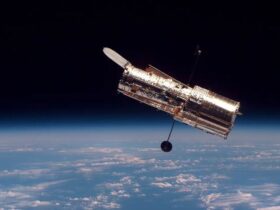As per orbital estimates, a rocket speeding through the cosmos for years collided with the Moon last Friday, but the impact was not detected firsthand, and photographic proof may have to wait.
The crash would have occurred around 7:25 a.m. US Eastern Time (1225 GMT), on just the Moon’s far side, according to astronomer Bill Gray, who predicted the collision in the first place.
At a speed of around 5,800 miles per hour (9,300 kilometers per hour), the approximately 4-ton object should create a crater 10 to 20 meters in diameter. Its velocity, course, and collision time were determined using data from Earth-based telescopes.
The item was tracked extensively by experts, and nothing other than gravity and sunlight interacted with it. Unless it was snatched away by an unseen force, the object would have collided with the Moon recently.
The rocket’s identity has been a point of contention due to the absence of an official agency charged with cataloging and monitoring space debris. He originally believed he was witnessing a SpaceX rocket but subsequently retracted his statement and said that what he was seeing was a 3rd stage booster of Chang’e 5-T1, which was deployed in 2014, being part of China’s lunar exploration mission.
The US space agency stated in late January that it wished to inspect the crater but acknowledged that locating it would be difficult and may take weeks or even months.
It is not uncommon for rocket segments to be discarded in the void of space after their mission of spacecraft deployment has been accomplished. However, this would be the first instance of an accidental impact with the Moon to have been predicted.
Previously, spacecraft were purposefully crashed onto the Moon for experimental objectives, including during the Apollo expeditions’ seismometer testing.















Leave a Reply